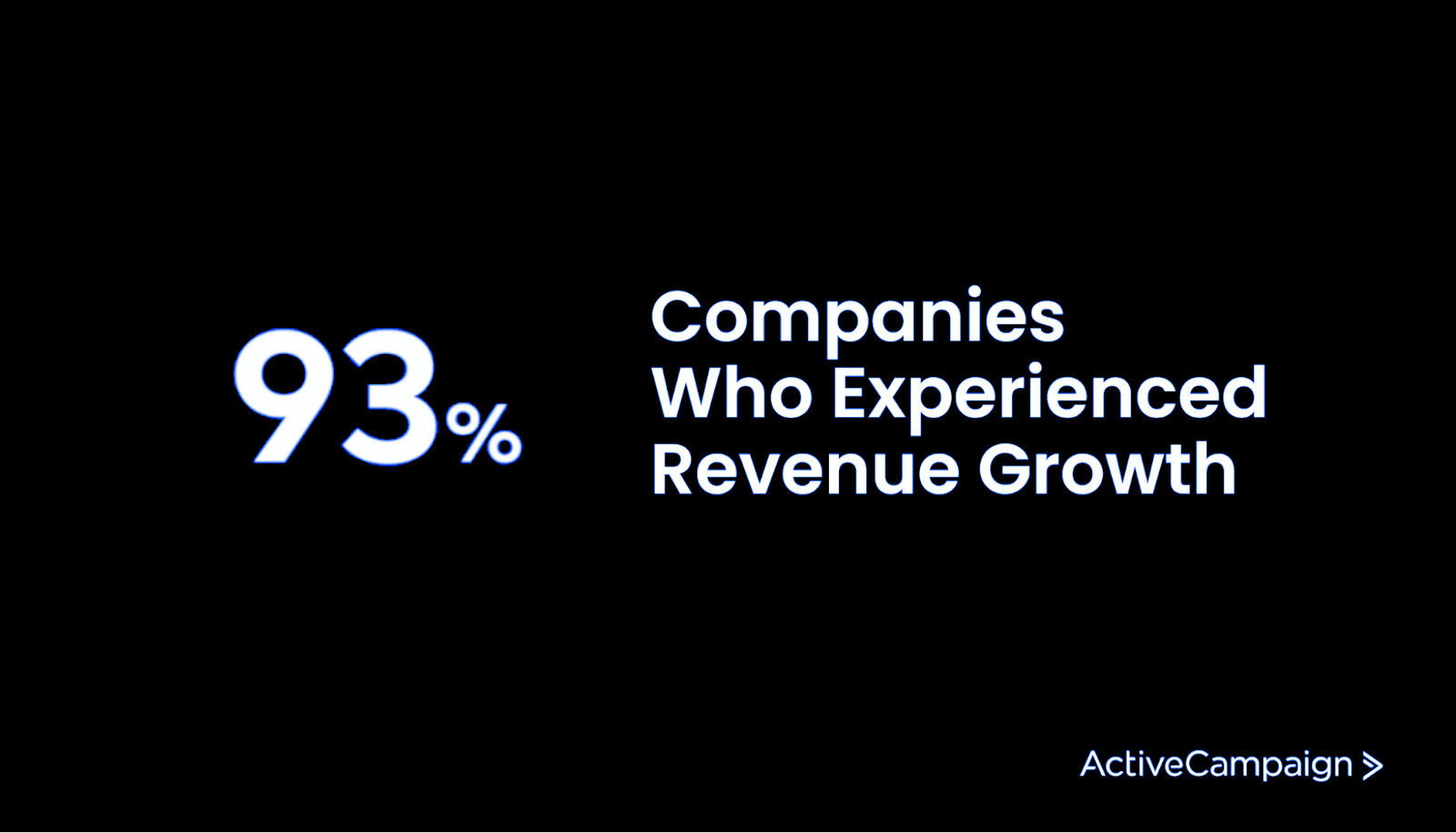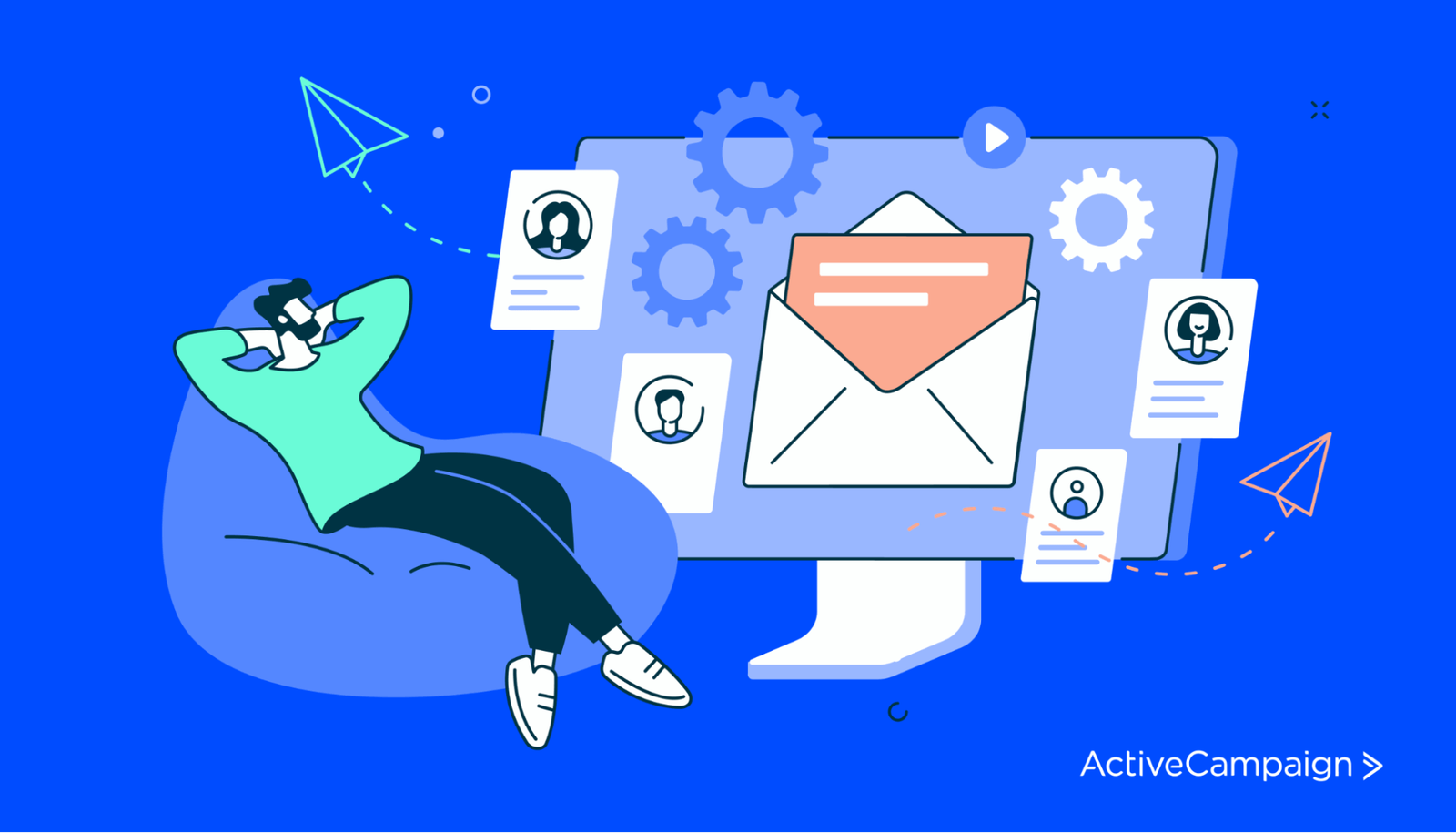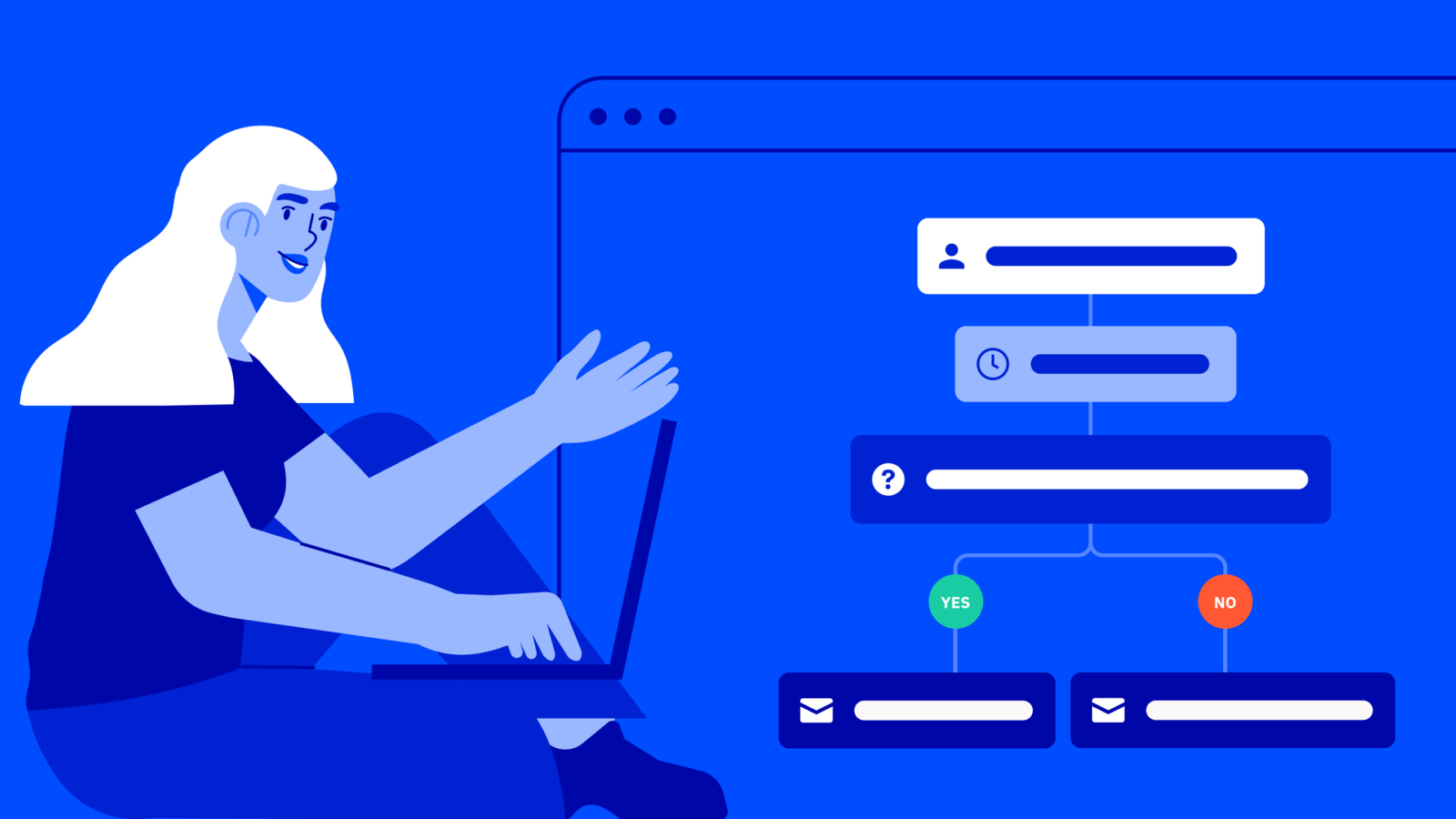Automated email follow-up campaigns are an essential marketing tool to help businesses stay connected with their prospects and customers. Automating the process can save time, improve communication, and ultimately boost your bottom line.
In this post, we'll explore the benefits of automated email follow-ups, how to create an effective campaign using ActiveCampaign, and share some best practices and examples of successful campaigns.
Benefits of automated email follow-up campaigns
Automated email follow-up campaigns help maintain regular email communication with your audience, builds trust, and increases familiarity. Your sales team can also benefit from the insights gained through automated email follow-up campaigns, allowing them to focus more of their time on closing deals and building relationships.
Nurturing leads and building relationships
Automated cold email campaigns and email follow-ups are powerful ways to nurture leads and build lasting relationships with prospects. By sending timely, relevant, and personalized messages, you can keep your brand top of mind and guide leads through the sales funnel.
Example: Send a series of educational emails to a new subscriber, offering valuable insights and gradually introducing them to your product or service.
Increasing customer engagement and retention
Follow-up email campaigns are also valuable for maintaining engagement with your existing customers. Regularly sending targeted, personalized content can strengthen customer relationships, encourage repeat purchases, and improve customer lifetime value (CLV).
Example: Send a follow-up email to customers who last purchased a while ago, offering a special discount or showcasing new products that might interest them.
Boosting sales and revenue
Automated follow-up emails can directly impact your bottom line by driving conversions and increasing revenue. By carefully timing and targeting your follow-up messages, you can capitalize on the moments when prospects are most likely to purchase.
Example: Send a follow-up email to someone who abandoned their shopping cart, reminding them of the items they left behind and offering an incentive to complete the transaction.
Best Practices for Automated Email Follow-Up Campaigns

- Timing and frequency of follow-up emails: Strike a balance between staying in touch and overwhelming your recipients. Consider factors such as your audience's preferences and the nature of your messages when determining the optimal timing and frequency for your follow-up emails. Setting follow-up reminders ensures you never miss an opportunity to engage with your audience.
- Personalization and segmentation: Tailor your follow-up emails to each recipient's unique needs and preferences by leveraging personalization and segmentation. This will help you build stronger relationships and drive better campaign results.
- Clear call-to-actions and value proposition: Make sure that your follow-up emails clearly communicate the value of your offer and include a compelling call-to-action. This will help guide your recipients toward the desired action, whether making a purchase, signing up for a webinar, or downloading a resource.
- Analyzing and optimizing your campaigns: Regularly review the performance of your follow-up campaigns and make data-driven decisions to optimize them. By analyzing email conversations, you can optimize your follow-up campaigns to better resonate with your audience and achieve your desired outcomes.
Measuring the Success of Your Automated Email Follow-Up Campaigns
Tracking and measuring their performance is crucial to ensure the effectiveness of your automated email follow-up campaigns and optimize them for better results. By closely monitoring key metrics such as open rates, click-through rates, response rates, and conversion rates, you can gain actionable insights into what's working and what's not and make data-driven decisions to improve your campaigns.
Using ActiveCampaign, you can easily access detailed analytics and reports for your email campaigns, allowing you to monitor and compare the performance of different follow-up sequences, identify trends, and pinpoint areas for improvement. By continually refining your campaigns based on data, you can enhance the impact of your automated email follow-ups and drive growth for your business.
Examples of Successful Automated Email Follow-Up Campaigns
Here are a few real-world examples of businesses that have successfully used automated email follow-up campaigns to demonstrate the potential impact of this powerful marketing strategy.
E-commerce store increasing repeat purchases
An e-commerce store selling beauty products implemented an automated follow-up email campaign targeting customers who made a purchase within the past 30 days. By segmenting their audience based on purchase history and personalizing their follow-up emails with product recommendations and special offers, the store saw a significant increase in repeat purchases and customer lifetime value.
B2B company increasing lead conversions
A B2B company offering IT services used an automated email follow-up campaign to nurture leads who downloaded a whitepaper from their website. By sending a series of automatic follow-up emails with relevant content and engaging calls-to-action, the company was able to increase their lead conversion rate and generate more qualified sales opportunities.
SaaS company reducing churn rate
A SaaS company providing project management software implemented an automated follow-up email campaign to re-engage users who had not logged into their platform for a period of time. By offering helpful tips, personalized content, and timely reminders, the company was able to reduce their churn rate and improve user retention.
How to Create an Automated Email Follow-Up Campaign in ActiveCampaign
ActiveCampaign is a powerful marketing automation platform enabling businesses to create, manage, and analyze email marketing campaigns. With its user-friendly interface and robust feature set, ActiveCampaign makes implementing automated email follow-up campaigns tailored to your specific needs easy. ActiveCampaign also seamlessly integrates with popular productivity tools like Google Apps to make managing your follow-up campaigns even more efficient.
Step-by-step guide to creating an automated email follow-up campaign in ActiveCampaign:
- Setting up automation rules: Start by logging into your ActiveCampaign account and navigating to the "Automations" tab. Click on "Create an Automation" and choose a trigger for your follow-up campaign, such as when a new contact subscribes to your list or makes a purchase.
- Creating personalized email templates: Next, design the content of your follow-up emails using ActiveCampaign's drag-and-drop email editor. Be sure to personalize your messages with dynamic content, such as the recipient's name or information about their recent interactions with your business.
- Segmenting your audience: To ensure that your follow-up emails are relevant and engaging, segment your audience based on their interests, demographics, or past behavior. ActiveCampaign makes creating and managing segments easy, allowing you to send targeted messages that resonate with each recipient.
- A/B testing your email content: To optimize the performance of your follow-up campaign, conduct A/B tests to compare different email elements, such as subject lines, headlines, or calls-to-action. ActiveCampaign's built-in A/B testing feature makes setting up and analyzing these experiments easily.
For those using Gmail as their primary email client, ActiveCampaign offers Gmail Auto integration for a streamlined experience.

Frequently Asked Questions
What is an automated email follow-up campaign?
An automated email follow-up campaign, also known as email sequences, is a series of pre-written, personalized emails sent to email recipients, such as subscribers or customers, based on specific triggers or actions. Campaign emails using automatic follow-ups help businesses maintain consistent communication through individual emails, nurture leads, and increase engagement and sales.
Why should I use automated email follow-ups for my business?
Automated email follow-ups allow you to maintain consistent communication with your audience without requiring manual effort. They help nurture leads, increase customer engagement, boost sales, and save time and resources by automating repetitive tasks.
How can I create an automated email follow-up campaign in ActiveCampaign?
Creating an automated email follow-up campaign in ActiveCampaign involves setting up automation rules, creating personalized email templates, segmenting your audience, and A/B testing your email content. ActiveCampaign provides an intuitive interface and powerful features to make creating and managing your campaigns easy.
What are some best practices for automated email follow-up campaigns?
Some best practices for automated email follow-up campaigns include sending emails at the right timing and frequency, personalizing content based on audience segmentation, including clear call-to-actions and value propositions, and regularly analyzing and optimizing your campaigns based on performance data.
How can I measure the success of my automated email follow-up campaigns?
You can measure the success of your automated email follow-up campaigns by tracking key metrics such as open rates, click-through rates, response rates, and conversion rates. If you are an ActiveCampaign customer, you get detailed analytics, email tracking, and reports built in to help you monitor and optimize your campaign performance.
Are there any examples of successful automated email follow-up campaigns?
Yes, many examples of businesses have successfully used automated email follow-up campaigns to increase repeat purchases, improve lead conversions, and reduce churn rates. These case studies can serve as an inspiration and provide valuable insights for creating your own effective follow-up campaigns.
Conclusion
Automated email follow-up campaigns can significantly benefit your business by nurturing leads, increasing customer engagement and retention, and boosting sales and revenue. By implementing these campaigns using ActiveCampaign, you can take advantage of powerful marketing automation tools and insights to optimize your email marketing strategy.
Now that you have a solid understanding of automated email follow-up campaigns and how to implement them in ActiveCampaign, it's time to start reaping the benefits for your business. Not an ActiveCampaign customer? Get started with a 14-day free trial now.






